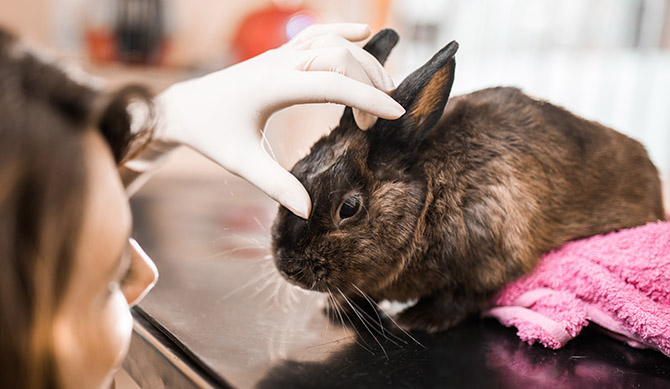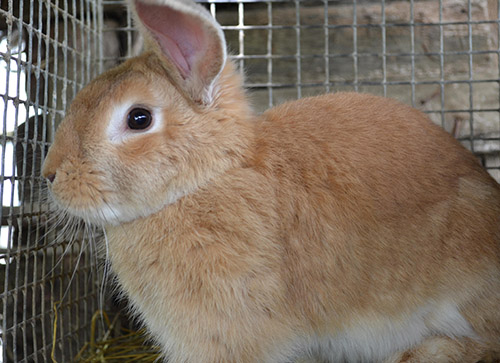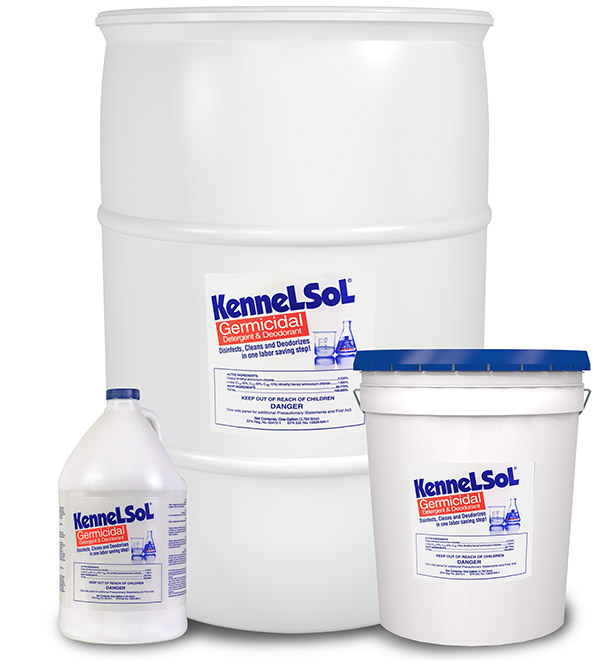
Whether you work in an animal care facility or you’re a pet owner yourself, it’s important to understand the kinds of risks our furry little friends face. One of the biggest dangers that animals can face include illnesses due to infectious diseases, and one of the most virulent of these diseases, Rabbit Hemorrhagic Disease, or RHD, can be particularly dangerous for domestic and wild rabbits. Almost every breed of domesticated rabbit typically kept as pets are susceptible to RHD, and this makes understanding Rabbit Hemorrhagic Disease even more important.
What is RHD?

Rabbit Hemorrhagic Disease is a highly infectious and lethal disease. It is classified as a foreign animal disease in the United States. RHD is not transferable to humans and poses no risk to pet owners or animal care professionals, but a rabbit that contracts the disease has a very low chance of survival. In fact, a survival rate of 30 percent for Rabbit Hemorrhagic Disease is considered highly generous; in many cases, the survival rate can be closer to zero.
What Causes RHD?
Rabbit Hemorrhagic Disease is a viral infection, which means that rabbits that come in contact with specific types of viruses are susceptible to developing RHD. The biggest culprit is known as the RHDV2 virus, though a variation of this, the RHDV1 virus, can also cause RHD. The virus exclusively infects wild and domestic rabbits and, thankfully, poses no risk to humans or other types of animals.
Symptoms and Treatment of RHD

RHD often goes undetected, because sometimes there are no overtly obvious symptoms associated with it other than sudden death. Rabbits can present with fever, inappetence, lethargy, muscle spasms, breathing difficulties, blue colored lips, or bleeding from the mouth and nose. Making things more complicated is the fact that there are no effective veterinary treatments for RHD at this time except for a vaccine out of California that is not approved for use nationwide. This means the most effective way to deal with RHD is to prevent an infection from occurring in the first place.
Preventing Rabbit Hemorrhagic Disease
With the best defense against RHD being prevention, it suddenly becomes crucial to keep domesticated rabbits safe by ensuring the places they are exposed to are as clean, disinfected, and as removed from any contaminants as possible. Practical ways for accomplishing this include ensuring that rabbits are housed in environments that have been sanitized sufficiently to kill viruses similar to RHDV2.
KennelSol: the Best Way to Combat RHD

If you’re looking for a safe and effective cleaning agent ideal for animal care, look no further than Alpha Tech Pet’s KennelSol or KennelSol HC. Whether it’s in an animal care facility, at a vet clinic, or at home, KennelSol has a proven track record in eliminating viruses similar to those that cause Rabbit Hemorrhagic Disease. In addition, these products are listed on the EPA’s List O, as being effective against RHDV2 when used at proper dilutions for the virus - https://www.epa.gov/pesticide-registration/list-o-disinfectants-use-against-rabbit-hemorrhagic-disease-virus-rhdv2#products
.
A one-step germicidal cleaner and deodorizer, KennelSol can be used to clean and disinfect the kinds of hard, non-porous surfaces that can harbor RHDV, such as habitats, food bowls, water bottles, vet clinic exam tables, and anything else that a rabbit may come into contact with. Help protect the domestic and wild rabbit population, and keep pet rabbit owners everywhere relieved and happy, by reducing the spread of this deadly virus; use KennelSol or KennelSol HC today.